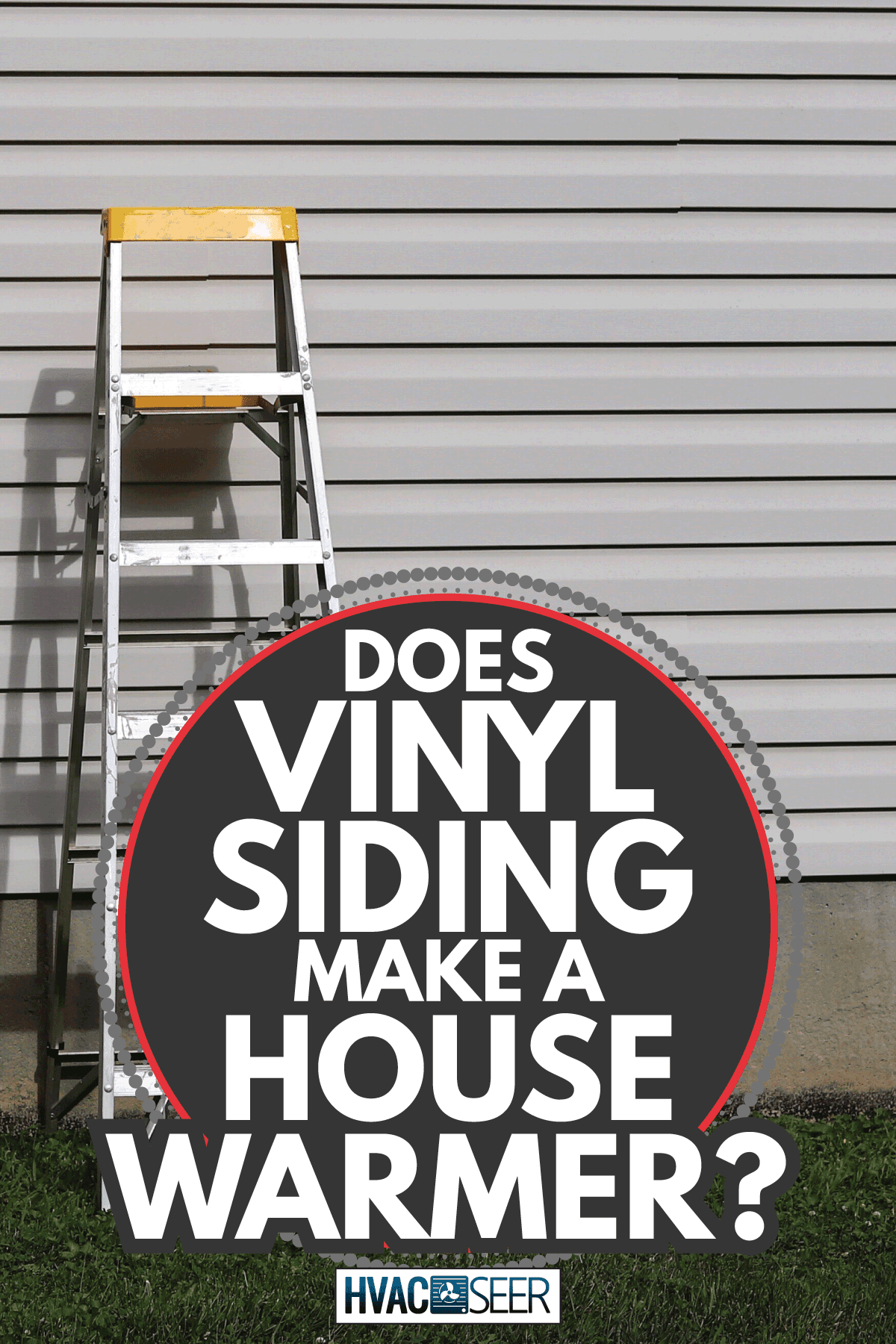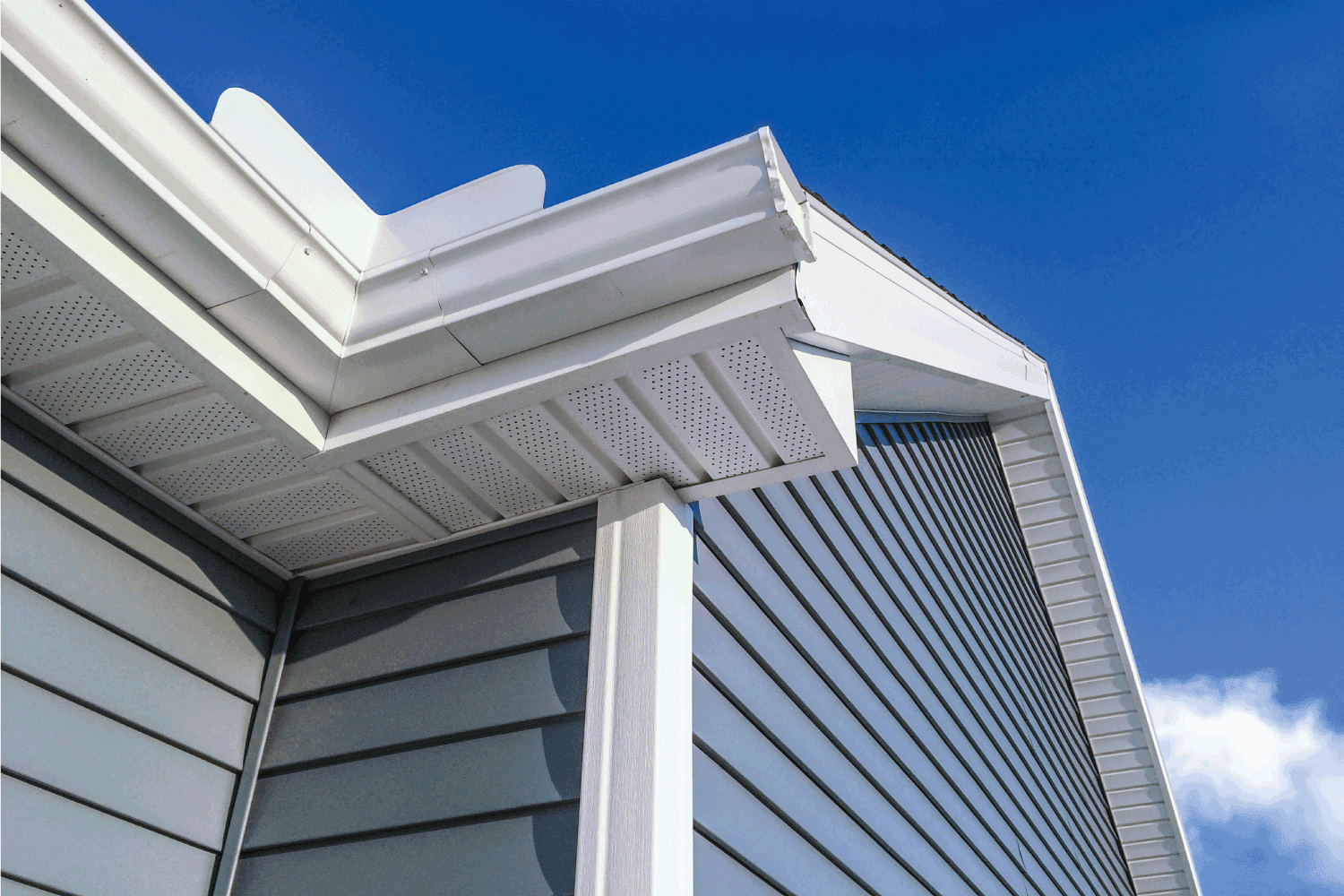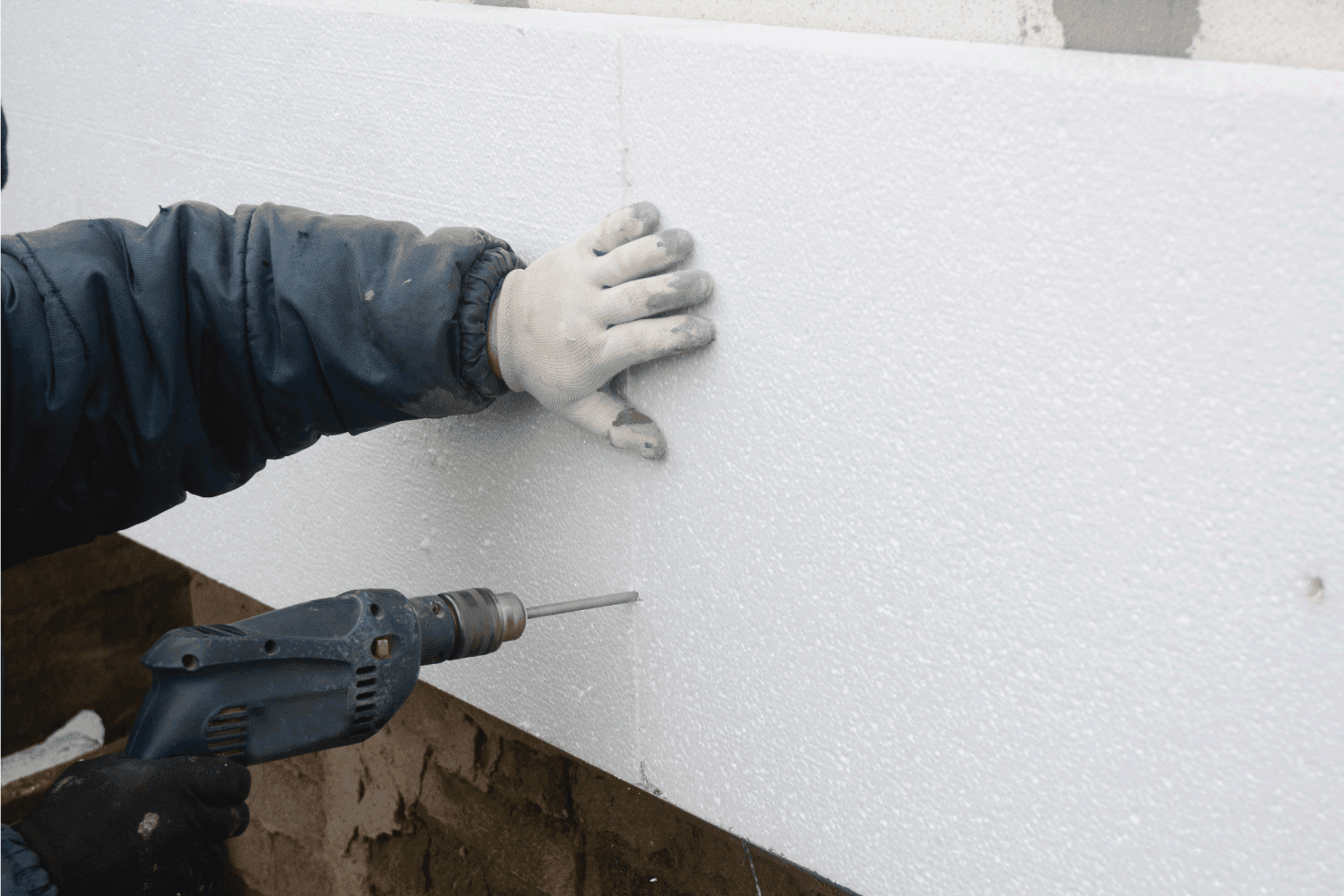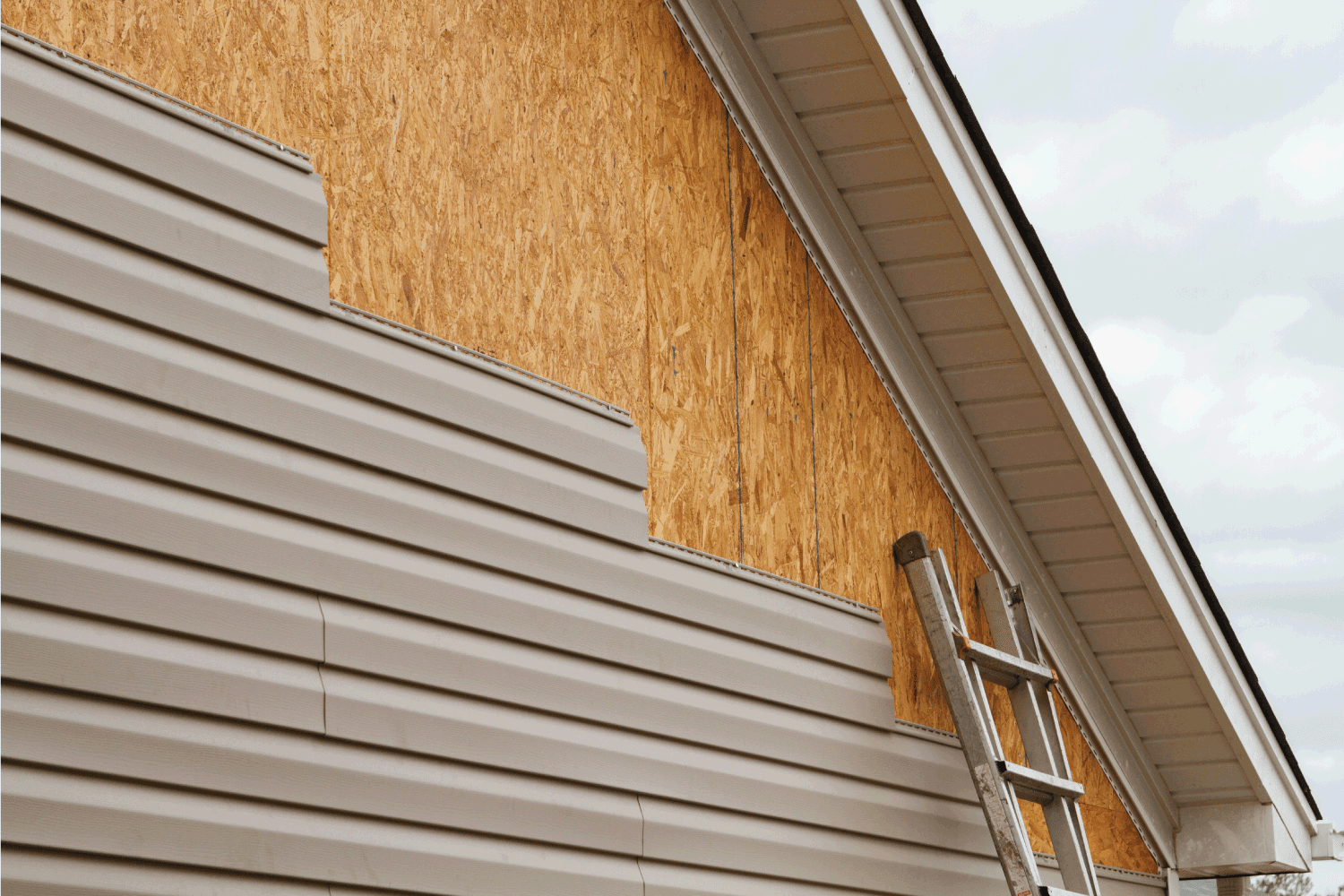One has to look much further than good looks to build an energy-efficient house. Utility bills can be a nightmare, and replacement costs make for greater horror. Therefore, the need for efficient house siding was never more relevant. Vinyl siding seems to be the popular trend, but will it keep the house warm for winters? We researched this topic to find out.
Yes, vinyl siding does make the house warmer. Vinyl is a dual-layered PVC resin structure. It takes its insulating abilities from these constituent substances. Additionally, it does not include any studs, therefore trapping all of the heat inside the house. You can also choose to amplify the insulating ability by adding an insulating layer beneath it.
However, is vinyl’s insulating ability so simple? Also, what is this curious case of insulated vinyl siding? Keep reading to find out more about how vinyl siding contributes to your house’s temperature.

How Vinyl Siding Makes A House Warmer
Vinyl siding is a plastic exterior used to wrap houses. It is infamous for both its top-notch aesthetic and weatherproofing capabilities. It is composed primarily of polyvinyl chloride (PVC) resin, often regarded as an excellent insulating option. So, could PVC be the key to how vinyl siding keeps the temperature warm?

The Many Benefits Of PVC
Lately, PVC is the most sought-after material for applications in construction. Its all-around capabilities in terms of moisture resistance and temperature variations are credible for this popularity. 80% of the vinyl siding weight is PVC. Thus, the siding enjoys the following benefits of PVC:
- It is an insulator of heat and electricity. When compared to metals, which are conductors of heat, PVC makes for a warmer, safer option. PVC siding, therefore, keeps the house much cozier than aluminum siding.
- It is highly durable. Since PVC has resistive properties against weathering, corrosion, and environmental toxins, it helps slow down the aging process. The longevity especially comes in handy for outdoor products, like vinyl siding.
- It is durable and lightweight. The toughness of the material helps it remain rigid even in extreme temperatures. It also helps in its resistive properties against external influences.
Dual Layered Structure
A vinyl siding consists of two layers of substance made of PVC; capstock and substrate. This dual-layered structure serves many benefits, including blocking heat passage from both sides.
- The top capstock layer is highly resistant to harmful UV radiation. It uses titanium dioxide, which protects the material from wear and tear.
- The bottom substrate layer includes limestone. Together, they work to improve the durability and overall toughness of the structure. It also reduces manufacturing costs and makes for an economical way of reinforcement.
R-Factor
The R-value of any building material determines its heat efficiency. On its own, vinyl has an R-value of 0.61, which is the approximate standard for most materials. However, by close attention to the insulation of the space and air capacity, the heat efficiency gets better. For example, adding a layer of insulation between the shingles can prevent heat loss.
The Absence Of Studs
Traditional siding materials, like wood, for instance, use wall studs for support. These fixtures create pores for energy to pass through. A vinyl siding layer thoroughly covers the structure, leaving no holes for thermal bridging or moisture damage to penetrate through. These factors make the overall temperature warmer.
What Are Some Other Benefits Of Vinyl Siding?

Interestingly, more of vinyl’s properties indirectly play a role in its ability to keep a house warm. They also add up to its overall efficiency as a siding choice.
Energy Efficiency
Blame your poorly insulated walls for the terrifying utility bills winters bring. The heat from the house escapes right out of improper insulation, causing thermal bridging. Thermal bridging causes your heaters to work at blasting rates. Vinyl siding helps vastly in this regard.
- It traps the heat within the house.
- It helps bypass chilly winds.
- Its dual-layer structure prevents all energy leaks.
This way, your heating devices would not have to work as hard. An additional layer of insulation into the vinyl could lower the costs further. The US Department of Energy found an 8% reduction in BTU per heating degree after using an insulated vinyl siding.
Moisture-Resistance
Vinyl siding is watertight yet comes with vapor permeability. So, you are going to gain a dual benefit out of these.
- It will keep the humidity of the room in control. A high humidity rate only makes the room warmer. Warmer rooms also save the thermostat from working harder.
- The domestic use of water produces a high amount of water vapor. The vapor, if not removed, could cause mold and moisture damage. The vinyl siding’s permeable nature will allow the water to escape thoroughly and quickly.
- The siding will also be of use in the face of heavy winter rains or melted snow. Its moisture-resistive capabilities will protect the walls from mold and mildew.
Environment Friendly
A vinyl siding reportedly remains intact for at least 20 years. A thicker or well-insulated version could last even longer. The durability of the structure, thus, helps save up on the energy requirements of replacement. Additionally, setting up a vinyl siding and maintaining it requires minimum energy as the panel design is relatively simple.
Installation Tips
If you choose to get a vinyl siding based on our research, get a full-fledged guide to help you. However, do not forget some essential tricks to get that siding right!
- Sidings may expand and contract in extreme weather so, make sure there’s space for that during installation.
- Do not shatter your siding with a standard saw. Instead, use a vinyl siding blade.
- Always hang your siding instead of nailing it on. This way, it leaves space for airflow.
- Do not forget to measure doors and windows when buying the siding.
- Do not underestimate the importance of a good nail. Get galvanized nails that are long enough to fit the siding panels.
Is Thicker Vinyl Siding Worth It?
Thicker siding is the better choice. Now, if you live in a place with harsh weather conditions, a thick siding is going to be your savior. However, in a setting with relatively mild weather, a thick siding is only going to cost you extra with little impact.
Should I Put Foam Board Behind My Vinyl Siding?

If your house is prone to moisture damage, a foam board under the siding will offer you the perfect help. Otherwise, it is still an energy-efficient means of insulation that also adds to the temperature regulation of the house.
Does House Wrap Go Under Or Over Foam Board?
It is advisable to slide the house wrap under the foam board for total efficiency. However, this is subject to change as per the guidelines of your contractor.
Is Vinyl Siding Insulated?

Traditional vinyl siding has two layers of substance but no extra thermal layer for insulation. You can insulate the vinyl siding by adding the extra layer yourself at the time of installation. However, a better way would be a direct investment in an insulated vinyl siding.
Insulated Vinyl Siding
An insulated vinyl siding has a structure much like the traditional siding. However, it comes with an extra layer of expanded polystyrene on the inside. This layer acts as an envelope of warmth around the house.
Benefits of Insulated Vinyl Siding
An added insulation layer means a warmer house. Here are some of the advantages an insulated siding offers as compared to the traditional ones.
- It has a resistance to heat flow at about R-2 to R-2.7. That means less heat to the surroundings.
- The foam insulation and vinyl of the siding combine like a single unit. This way, it provides more durability and strength against extreme weather conditions.
- The extra thermal layer regulates the temperature itself, more like a natural thermostat.
- It provides noise-suppression options.
The Verdict
Keeping the house warm in cold conditions is tricky. Of course, you can use a thermostat to regulate it. But, that comes at the cost of spending more during the chilly seasons. That is why becoming familiar with excellent materials like vinyl siding help reduce the costs. We hope you found the information presented insightful.
Before you go, are you wondering if other areas need insulation? How about vaulted ceilings? We can offer some guidance. Check out our post here.
Need help getting air circulation in rooms without windows? There are some methods to achieve this. Check out our post here. Until next time!
